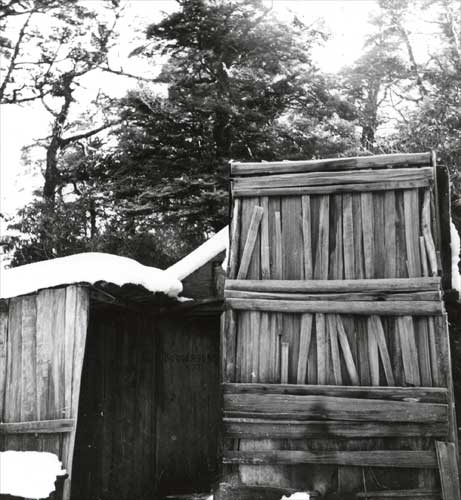
This is Les Bergesen’s hut near Ohakune in 1949. Ashley Cunningham tells of how it came to be built.
What\'s you story?
Contributed by Ashley Cunningham of Napier.
During the later stages of the Second World War, married men were conscripted into the armed forces. Many were reluctant soldiers, some refused, and a few (very few) disappeared into the bush. Such a one was Les Bergesen of Ohakune. It was not a popular option in those years, when patriotism ran high, but he had a few supporters who from time to time left supplies at a pre-arranged place.
I believe he built, and used, two huts, one of which was not very far from the present Ohakune Ranger Station. The other was beside the stream west of the 5-mile peg on Blyth Track. It was here that Les Bergeson was captured in 1944.
A friend showed me Bergesen’s hut a few months after his capture. We delighted in the workmanship of it. It was built of kaikawaka, broadaxed so perfectly that the timbers and woodwork seemed almost to be sawn. It had a single room with a large open fireplace, bed, bookcase, table, chair and food cupboards. Under a loose floorboard was his broadaxe, but that had disappeared by 1949 when I last used the hut.
I revisited the site in May 1987, and there had been so many changes in the forest and the stream that it took many hours to find the site. By then, the hut had been reduced to scraps of decaying wood, and some old corrugated iron.
Using this item
Private collection
This item has been provided for private study purposes (such as school projects, family and local history research) and any published reproduction (print or electronic) may infringe copyright law. It is the responsibility of the user of any material to obtain clearance from the copyright holder.






Add new comment